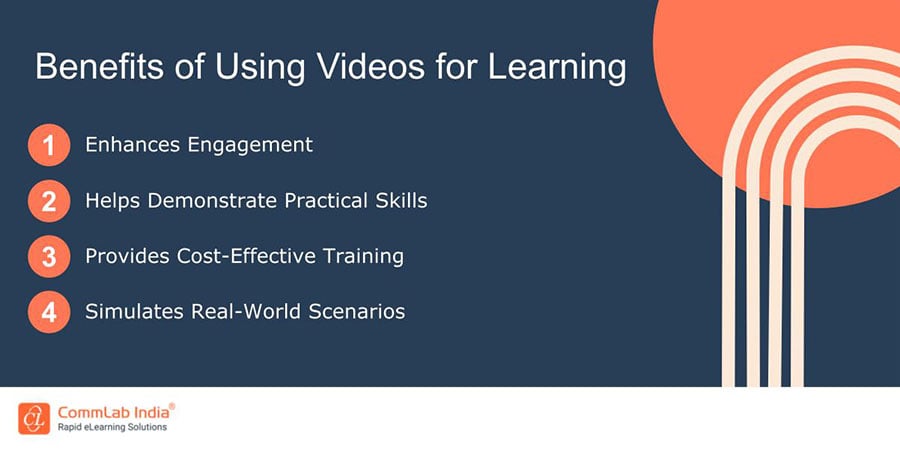Learning on the Fly: Microlearning Solutions for Busy Bees
Microlearning solutions are effective and entertaining. Read on to know more about the impact of microlearning solutions for corporate training.

Are you tired of drowning in a sea of never-ending training materials? Do you find yourself dozing off during those marathon corporate workshops, desperately clinging to your last ounce of caffeine? Well, fear not, microlearning is the cool kid in town, here to shake things up and make learning as refreshing as an ice-cold lemonade on a scorching summer day. With its bite-sized nuggets of wisdom, microlearning caters to our ever-shrinking attention spans and ensures that even the busiest of bees can squeeze in a bit of brain fuel. Let’s dive headfirst into the world of microlearning solutions.
Microlearning Solutions: Bite-Sized Brilliance for Modern Learners
Discover the transformative power of microlearning solutions, where knowledge meets brevity in the most engaging way possible. Say goodbye to tedious training sessions and hello to bite-sized brilliance! With microlearning, you can access short, interactive modules that pack a punch, fitting seamlessly into your busy schedule. Let’s kickstart your learning journey with microlearning solutions now!
What are Microlearning Solutions?
Microlearning Solutions for corporate training are short, focused learning modules designed to deliver specific information or skills in bite-sized formats. They cater to the modern learners’ need for quick, easily digestible content that can be accessed anytime, anywhere. Here are some popular microlearning solutions to leverage for corporate training:
1. Mobile Apps
Mobile apps provide a convenient platform for delivering microlearning content. Employees can access training materials, videos, quizzes, or interactive modules on their smartphones or tablets. These apps often incorporate gamification elements to increase engagement and motivation.
2. Video-based Learning
Short videos are effective for delivering microlearning content. They can be used for demonstrations, simulations, case studies, or knowledge sharing. Videos are easily consumable and can be combined with quizzes or assessments to reinforce learning

3. Interactive Infographics
Infographics present information visually, using graphics, charts, and icons. They are concise and visually appealing, making complex topics easier to understand. Interactive infographics allow learners to engage with the content, explore different sections, and receive immediate feedback.
4. Podcasts and Audio Modules
Audio-based microlearning is suitable for learners who prefer audio-based content or have limited time for visual learning. Podcasts and audio modules cover specific topics, industry updates, or expert interviews, providing on-the-go learning opportunities.
→ Download eBook Now: Microlearning 101
5. Gamified Learning
Gamification techniques , such as quizzes, challenges, or leaderboards, can be integrated into microlearning modules to enhance engagement. Learners earn points, badges, or rewards as they complete modules, fostering a sense of competition and accomplishment.
6. Interactive eBooks
Interactive eBooks combine text, images, videos, and interactive elements to deliver microlearning content. Learners can navigate through the material at their own pace, access additional resources, and engage in activities embedded within the eBook.
7. Social Learning Platforms
Social learning platforms enable employees to share knowledge, collaborate, and learn from one another. Microlearning content can be shared through discussion boards, forums, or microblogging platforms, allowing learners to engage in peer-to-peer learning and knowledge exchange.
8. Virtual Reality (VR) and Augmented Reality (AR)
VR and AR technologies provide immersive and interactive learning experiences. They can simulate real-life scenarios, allowing employees to practice skills, make decisions, and receive immediate feedback in a safe and controlled environment.
Understanding the Impact of Microlearning Solutions for Corporate Training
1. Increased Engagement
Traditional training methods can sometimes be monotonous and fail to capture learners’ attention. By implementing microlearning solutions, organizations can create engaging and interactive content that holds learners’ interest. For example, a sales team could use a mobile app that offers short video modules on effective sales techniques, accompanied by interactive quizzes and scenarios. This approach keeps learners engaged and motivated to learn.

2. Flexible Learning
Microlearning solutions offer flexibility in terms of time and location. Learners can access modules on their mobile devices or computers whenever it’s convenient for them, eliminating the need for everyone to be physically present in a classroom. For instance, a global organization with remote teams can use interactive eBooks to deliver consistent product training across different time zones and locations, allowing employees to learn at their own pace.
3. Just-in-Time Learning
Microlearning is particularly effective for providing on-demand, just-in-time learning support . For example, imagine an employee facing a complex software issue. Instead of going through an entire training course, they can quickly access a short video tutorial or an interactive infographic explaining the specific steps to resolve the problem. This targeted microlearning approach helps employees find immediate solutions and minimizes downtime.
4. Knowledge Retention and Reinforcement
Microlearning modules can be designed to reinforce knowledge and improve long-term retention. For instance, a manufacturing company could use gamified learning modules to reinforce safety protocols. Employees can access short interactive quizzes, simulations, or scenario-based challenges to test their understanding and application of safety procedures. Regular reinforcement through microlearning helps solidify knowledge and ensures compliance.
5. Cost and Time Savings
Traditional training methods often involve significant costs and time commitments for organizations. Microlearning solutions offer cost-effective alternatives that can be created and updated relatively quickly. For instance, instead of organizing in-person workshops for new employee orientation, an organization could develop a mobile app with microlearning modules covering company policies, culture, and expectations. This approach saves on travel expenses, reduces the need for dedicated training venues, and allows employees to onboard at their own pace.
6. Performance Support
Microlearning solutions can serve as effective performance support assets. For example, a customer service team could utilize a mobile app with microlearning modules containing common customer scenarios and best practices for handling them. When facing a challenging situation, employees can quickly access the app for guidance, tips, or role-playing simulations, improving their on-the-job performance and customer satisfaction.
7. Analytics and Tracking
Microlearning platforms often provide analytics and tracking capabilities, allowing organizations to monitor learners’ progress, identify knowledge gaps, and assess the effectiveness of training initiatives. For instance, a software development team could use a social learning platform to share code snippets, discuss programming concepts, and provide feedback on each other’s work. The platform’s analytics can help track participation, engagement, and knowledge exchange, enabling managers to identify top contributors and areas for improvement.
Wrapping Up!
Remember, with microlearning solutions, you can transform your training experience from mundane to magnificent, one byte-sized nugget at a time. So, go forth, my knowledge-hungry comrades, armed with the power of brevity and the wit of a thousand memes. Embrace microlearning, seize the opportunities it presents, and never stop seeking those “aha” moments. Until we meet again, here’s a comprehensive eBook you should definitely check out.





